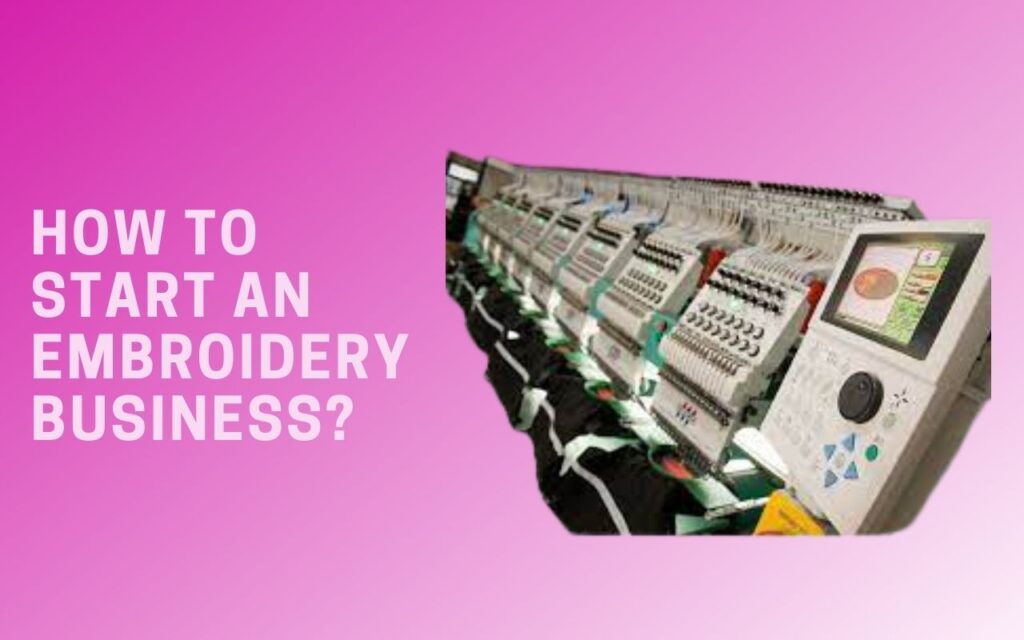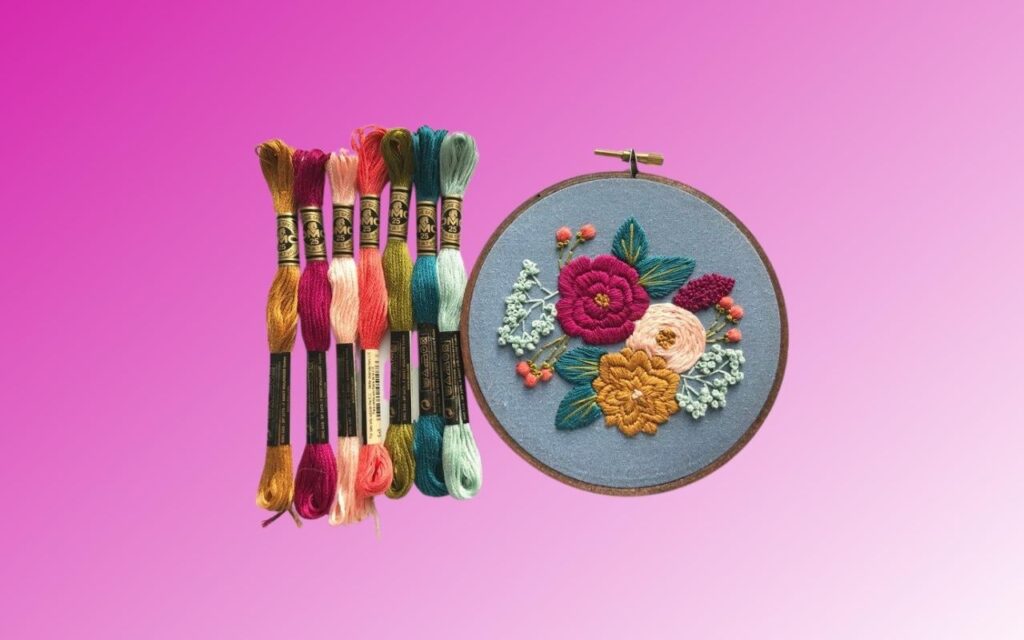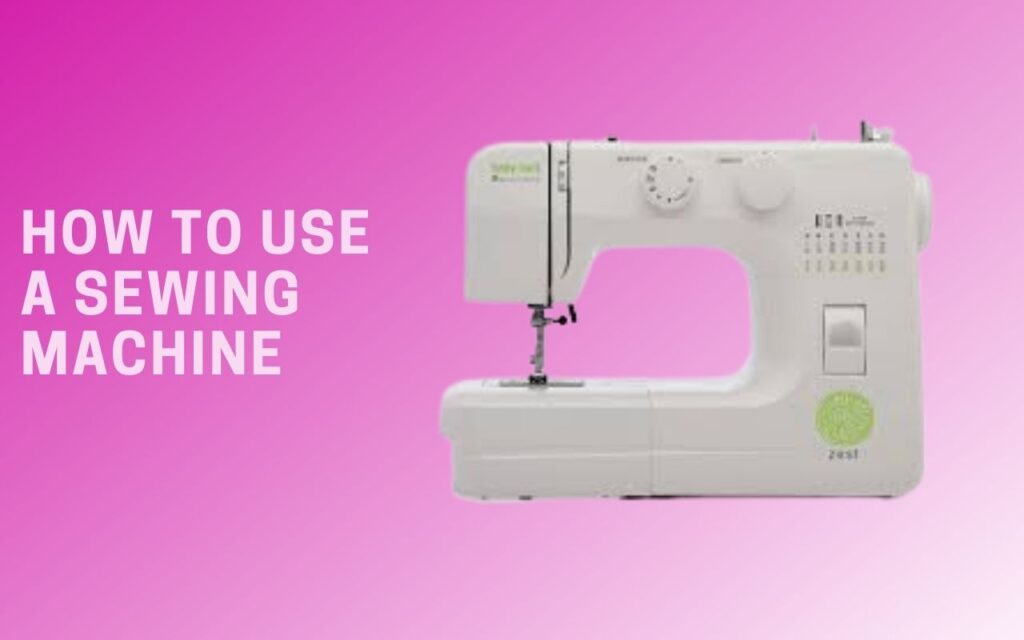Imagine that you have come up with a fantastic sewing project idea and got right to work to execute the
notion, but you found that your sewing machine is not working correctly. Nothing is more frustrating than
a sewing machine that refuses to cooperate. So for your help, we’ve broken down the 10 Common Sewing
Machine Problems so that you can solve any issue without worry!
One of the most challenging machines to learn is a sewing machine, as simple as it may appear. Simple
neglect can impact the stitch in the cloth, resulting in a quality compromise. There must be a reason for a
flaw in a garment. A sewist must understand the various treatments for these prevalent causes to take
preventive action against them. So, let’s start the article!
Contents
- 1 10 Common Sewing Machine Problems
- 2 1. The machine is skipping stitches
- 3 2. Knotting
- 4 3. Needle bends or breaks
- 5 4. Inconsistent fabric feed
- 6 5. The machine is stuck
- 7 6. Strange Sounds from the machine
- 8 7. The machine cannot sew the fabric
- 9 8. The fabric doesn’t feed through the needle
- 10 9. Seams tend to collect or pucker as time goes on
- 11 10. Stitching and feeding are both uneven
- 12 Final Verdict
10 Common Sewing Machine Problems
Sewing machines have a lot of the same issues, so they’re easy to predict and fix. Most sewing machines
are prone to these ten typical issues to some degree.
1. The machine is skipping stitches
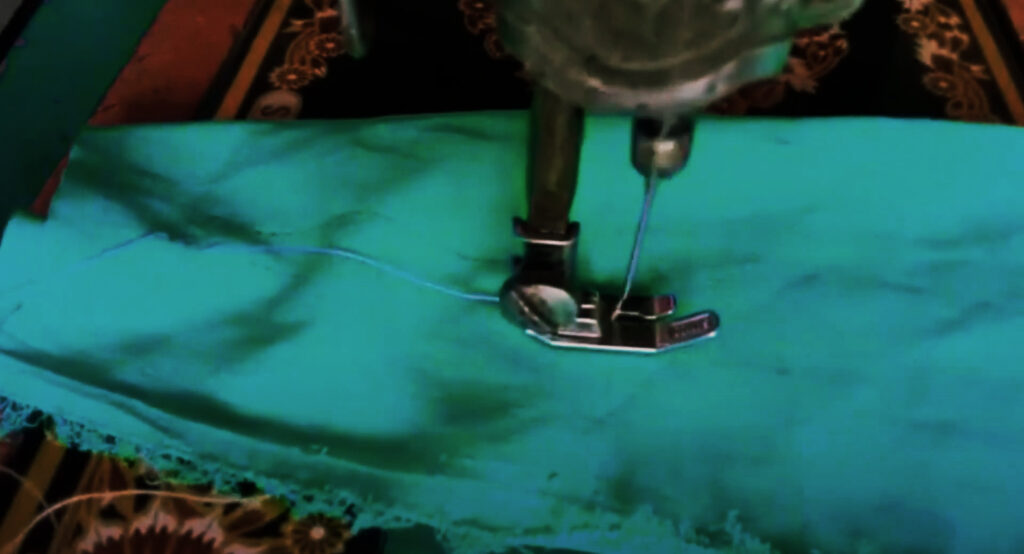
One of the main issues of a sewing machine is that your machine skips stitches. Several factors might
cause your machine to skip stitches. Using the incorrect needle for the cloth you’re sewing is the most
common reason for a sewing machine skipping stitches. So, first, make sure your needle is at the correct
place, isn’t bent or otherwise damaged, and that you’re using the suitable needle for the job. The threads
will not lock correctly if the top thread does not reach the bobbin, which will result in a skipped stitch.
Test your machine after re-threading the top and bobbin threads. If your machine continues to skip
stitches, there may be a timing problem that requires professional assistance.
2. Knotting
If you’re a novice sewer, you’ll find yourself in this frustrating scenario all too often. There are various
possible causes for additional thread knots on the bottom of your stitching. You must check if the upper
thread is adequately threaded or if the upper thread creates a straight stitch but the bobbin thread forms
loops under the cloth. Re-thread the machine after removing the loops under the fabric gently. When
threading, raise the presser foot to allow the thread to slip into the thread tension plate by rotating the
handwheel towards yourself.
Also, remove your bobbin and re-thread it. The direction in which the bobbin unwinds is essential in
some machines. Make sure you have correctly placed it by consulting your handbook. Check that the top
thread and bobbin threads are the same types. Machines that draw threads at various speeds, resulting in
tangles and knots, are often caused by thread weight differences. Regularly check your machine and your
project’s cloth to ensure everything is in working order.
3. Needle bends or breaks

If the needle breaks while sewing, it’s likely that you have placed the needle wrongly or that you have
used the wrong presser foot, causing repetitive hitting and putting a lot of strain on the needle. It is a
severe condition that may be both harmful and inconvenient. Place the needle with the flat side facing
you, leaving no room once it has been put into the needle shaft, and then tighten the needle clamp.
If the problem remains after you’ve replaced the damaged accessories with new ones, make sure the
needle size is appropriate for the cloth you’re sewing. When stitching diverse fabrics, the density and
roughness of the cloth influence the needle selection, therefore switch needles as needed.
For each new project, start with a fresh needle. It keeps needles from becoming dull or hooked at the
point, causing fabric damage. If you’re using the right needle but still have problems with breaking or
bending, there might be underlying mechanical difficulties with the timing mechanism that require
professional repair.
4. Inconsistent fabric feed

Even seams are a sign of a skilled seamstress, but they can be tough to achieve if your machine isn’t
pulling the cloth uniformly. The uneven feed can be caused by various factors, with the feed dogs being
the most common offender. If your machine is much old, the feed dogs have likely worn down to the
point that they cannot catch fabric evenly. They’re usually easy to replace, and your machine will be back
up and running in no time.
Clean around the feed dogs if your equipment is new. It is where lint tends to accumulate, especially if
your machine has a drop-feed feature. If you notice any of these common troubles with your sewing
machine, examine your sewing machine thoroughly. Make that the feed dogs are doing all of the work.
Forcing the cloth through the machine inadvertently might bend the needle, resulting in various issues. If
neither of these is the problem, consider raising the pressure on your presser foot to ensure that your
fabric stays in touch with the feed dogs evenly.
5. The machine is stuck
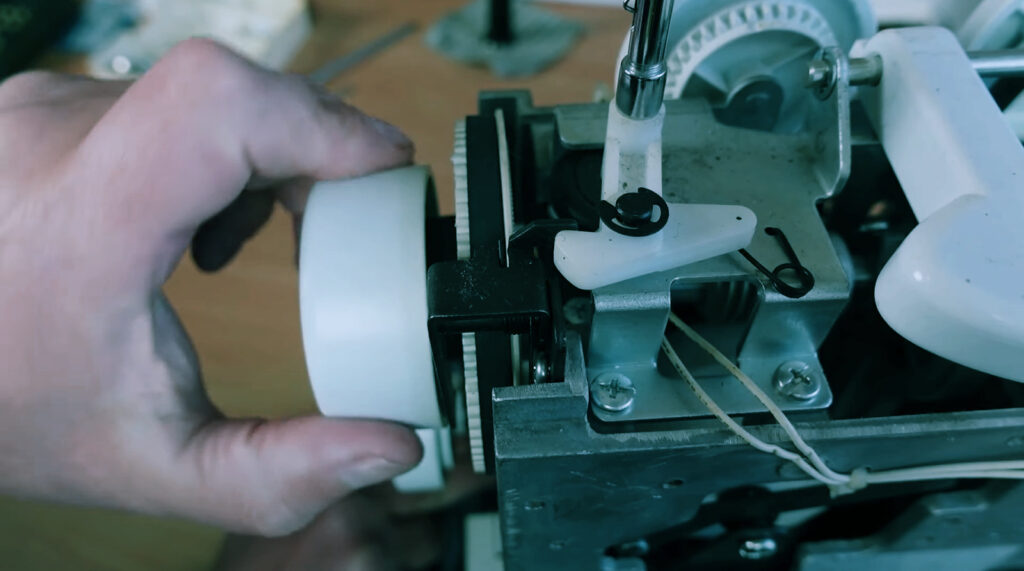
When you’re just getting a seam started, it’s not unusual to need to give your machine a little aid by
spinning the handwheel. Jamming is a regular problem for a sewing machine. Stop what you’re doing if
you have to push the wheel to turn or the machine won’t start with a little help.
Remove any fabric you were trying to stitch as your initial step towards a solution. It necessitates gently
tugging on the cloth and raising it high enough to clip the threads and pull the fabric free of the machine.
Remove the bobbin, throat plate, and any other parts to free any blocked threads and get the machine
stitching again.
Fuzz and lint can clog your machine’s mechanics, making it difficult for them to function correctly. Check
the needle on your sewing machine before you restart stitching. A thread jam can occur even with a
slightly bent needle.
6. Strange Sounds from the machine

It may be the time to clean the lint or grease accumulated on the hook or needle bar if your sewing
machine makes a lot of noise. It might also be a symptom of needle damage, so look for it and replace it if
necessary.
Remove your foot from the pedal as quickly as you hear random thumps or clunks from your machine.
Check your manual for the recommended maintenance routine if your equipment merely needs a good
cleaning. Clean and lubricate your machine as directed, then test it on a scrap piece of cloth. We
recommend a professional get it tuned up if there are still odd noises.
7. The machine cannot sew the fabric
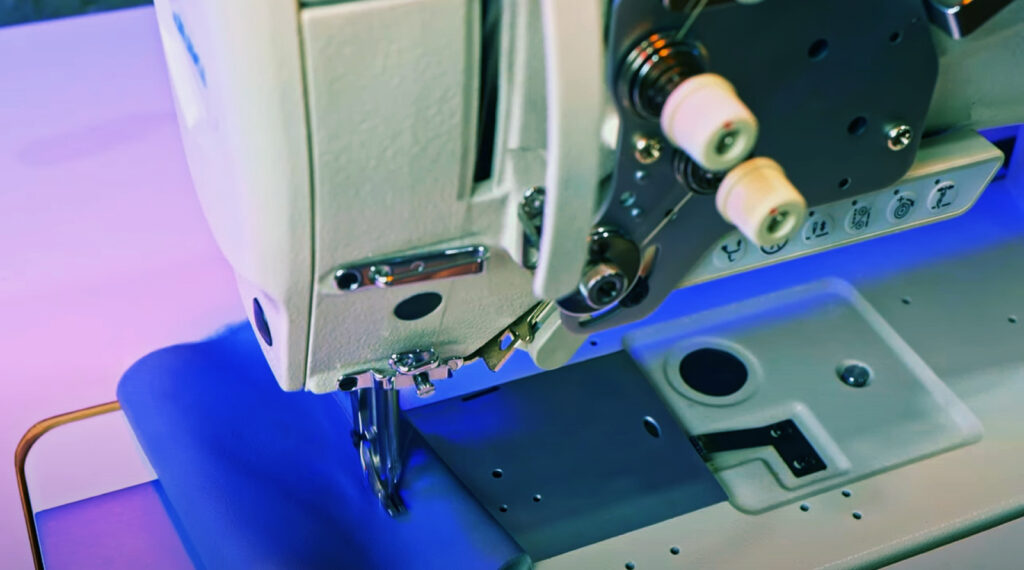
If your machine won’t sew a specific type of cloth, the problem is most likely due to the fabric itself. If
you’re working with thick, napped, elastic, or fragile fabrics, you’ll need to pay extra care to them by
using different needle sizes, thread kinds, and presser feet.
Sew using cotton/polyester thread and an even-feed foot if you’re working with dense textiles. Polyester
thread with a Teflon foot or even-feed foot is ideal for elastic, leather, or laminated fabric because it feeds
the sticky fabric smoothly.
When sewing uneven materials, the machine performs better with the roller foot since the foot can
efficiently pass the uneven and heavy fabrics through the machine. Finally, if you’re working with
delicate fabrics, use small needles and threads, as well as a knit foot or an even-feed foot, to prevent
slippage and ripples.
8. The fabric doesn’t feed through the needle
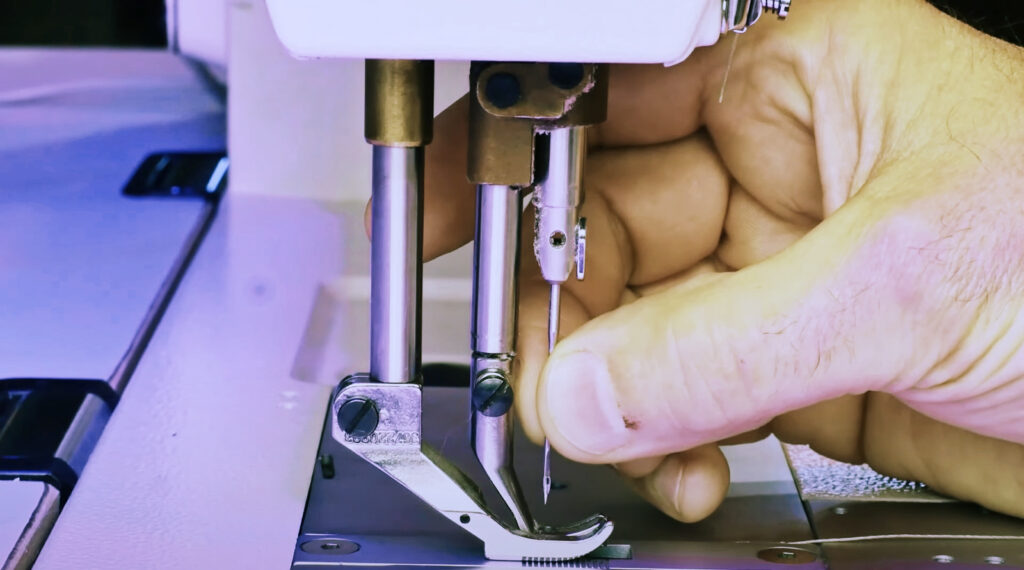
Fabric feed difficulties can result from a variety of factors. For free-motion stitching, many sewing
machines offer an option that lowers the feed dogs. On the other hand, these feed dogs are responsible for
moving the cloth beneath the sewing machine needle in regular operation. Check whether there is a
setting that has reduced the feed dogs; if so, restore them to their correct setting.
Remove the throat plate and wipe out any dust, thread, and lint if your machine doesn’t have this setting.
Also, oil the machine as directed in your sewing machine’s handbook. If the feed dogs are still not
working, consult your sewing machine’s handbook to diagnose the issue. If everything else fails, you will
need to repair the machine.
9. Seams tend to collect or pucker as time goes on

The cloth does not seem as smooth as it should when seams bunch or pucker, detracting the product’s
beauty from the end. The speed of material flowing through the sewing machine and the speed of the
needle will differ if there is considerable friction between layers of materials, resulting in seam puckering.
Furthermore, if you sew with an overly thick thread or needle, the weave threads will be pushed aside,
causing difficulty. Differences in the degree of stretching between thread and fabric, the thread not having
a low shrinkage nature, incorrect stitch length, and excessive tension might contribute. When sewing,
choose threads comparable to the fabric’s substance or have a low shrinkage factor, and replace the
presser foot if necessary.
10. Stitching and feeding are both uneven
Uneven stitch and feed distort the shape of a working product and don’t sew textiles firmly. The problem
arises if you use low-quality thread, thread the machine improperly, or drag the cloth through the presser
foot. Choose a robust thread with minimal shrinkage. It would be best to thread the bobbin case according to the user handbook, and instead of dragging the fabric while sewing, let the feed dog draw it beneath the
presser foot.
As aggravating as it is when your sewing machine rebels, the remedy is most undoubtedly
straightforward, regular maintenance can help avoid the worst problems from occurring, and your
handbook is a vital resource.
Final Verdict
It’s common to encounter a stitching problem caused by a sewing machine issue. There are a variety of
causes for difficulties that occur during sewing, and understanding the source and finding a solution for
each is critical. Most of the time, it’s owing to the operators’ hasty actions. You can reduce these issues by
avoiding mistakes in machine handling and using the proper working practices.
We also have a quick checklist for mechanical issues that can help you save a trip to the mechanic and a
lot of aggravation. But if you cannot handle the problem, you can always consult your sewing machine’s
troubleshooting instructions.

